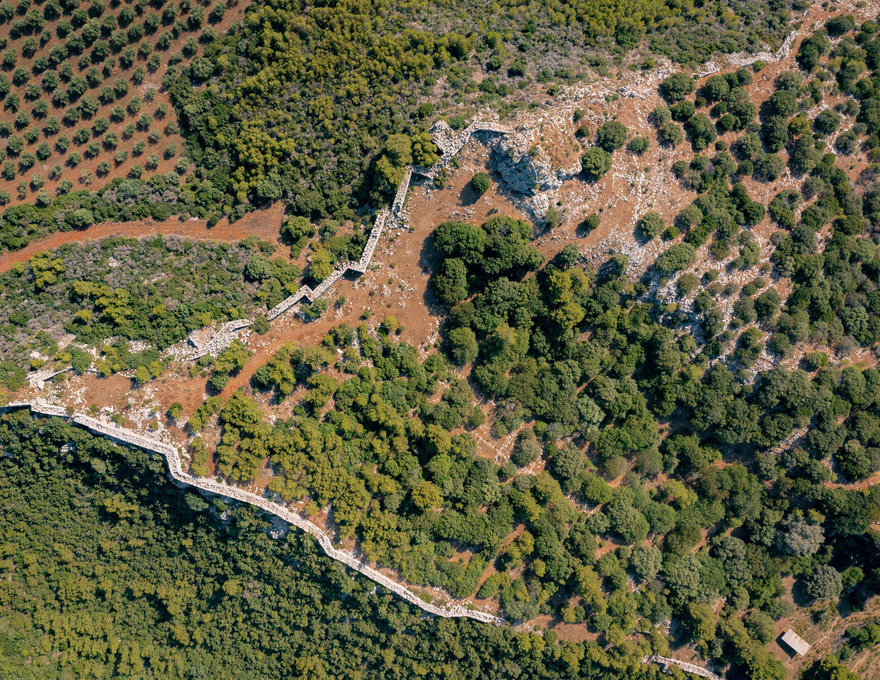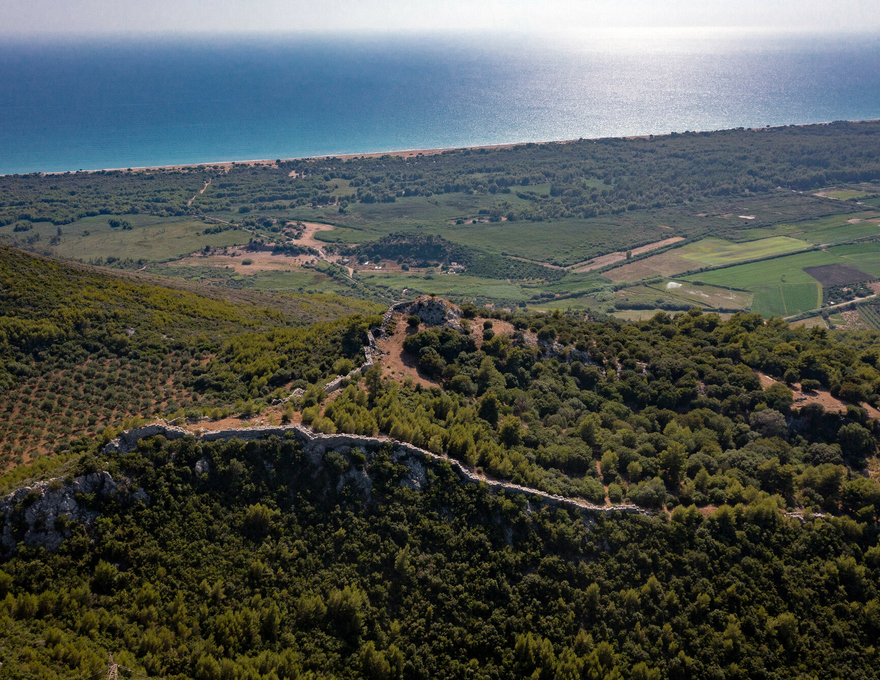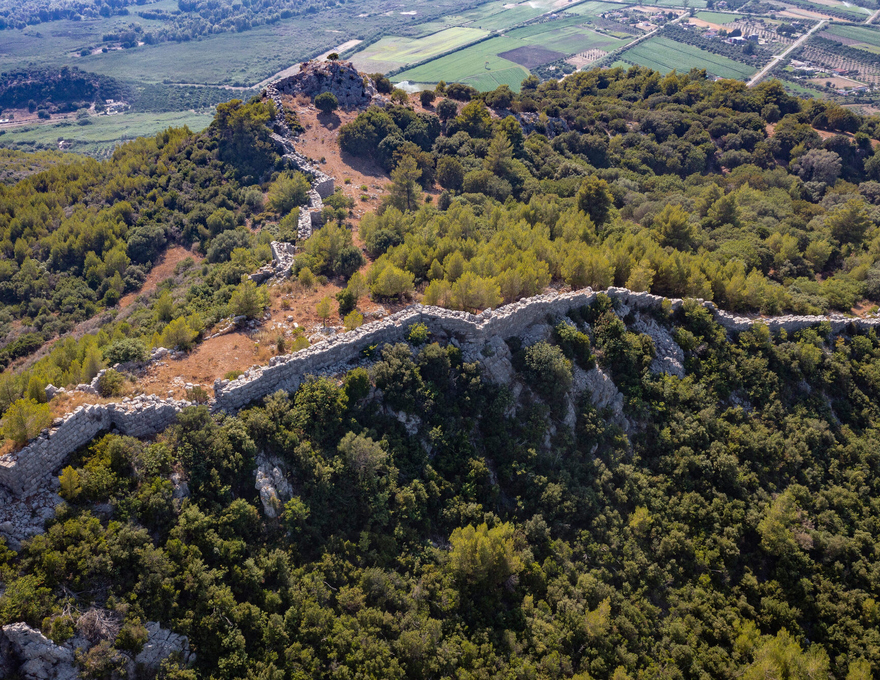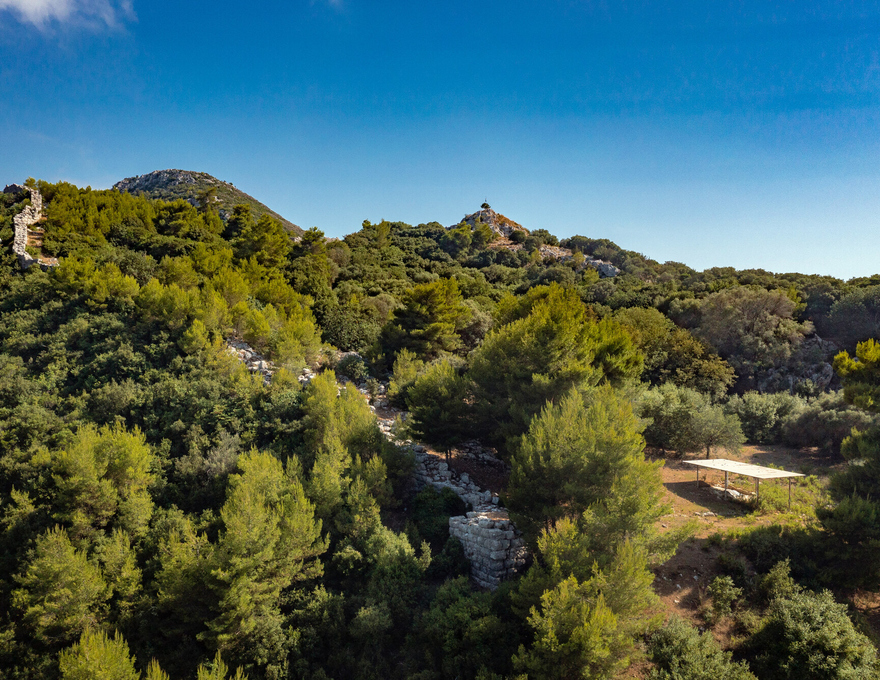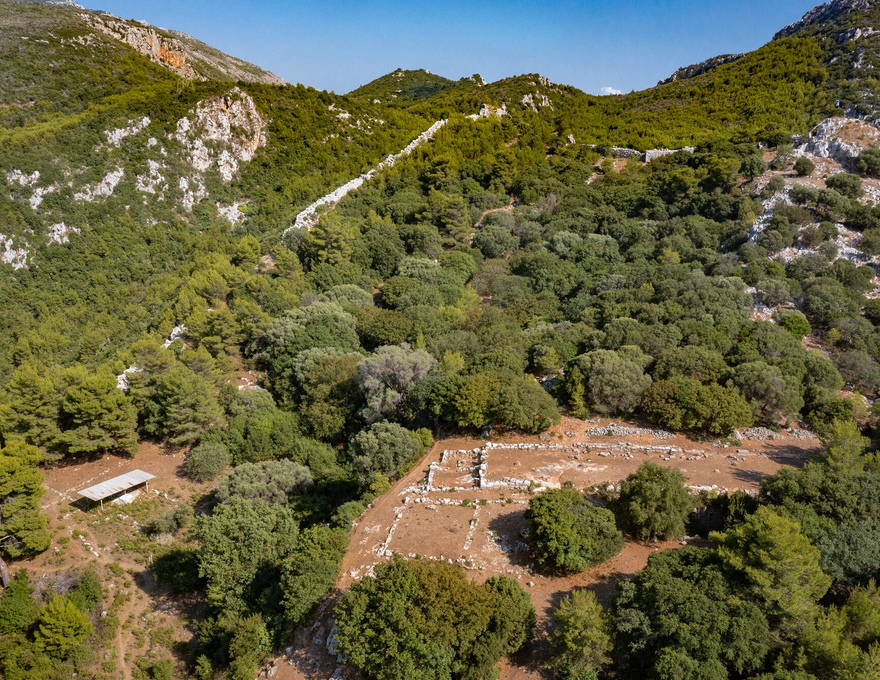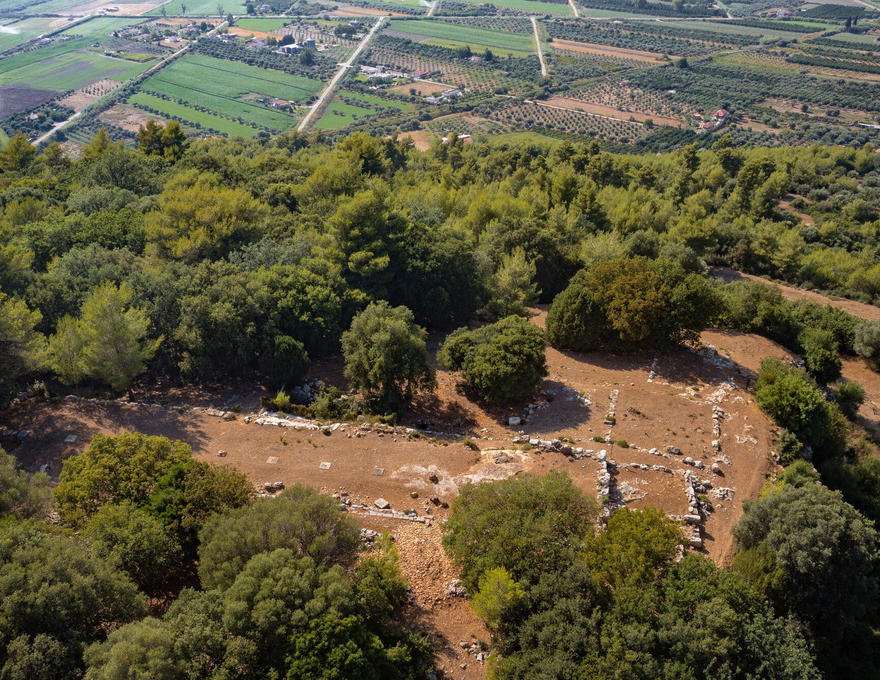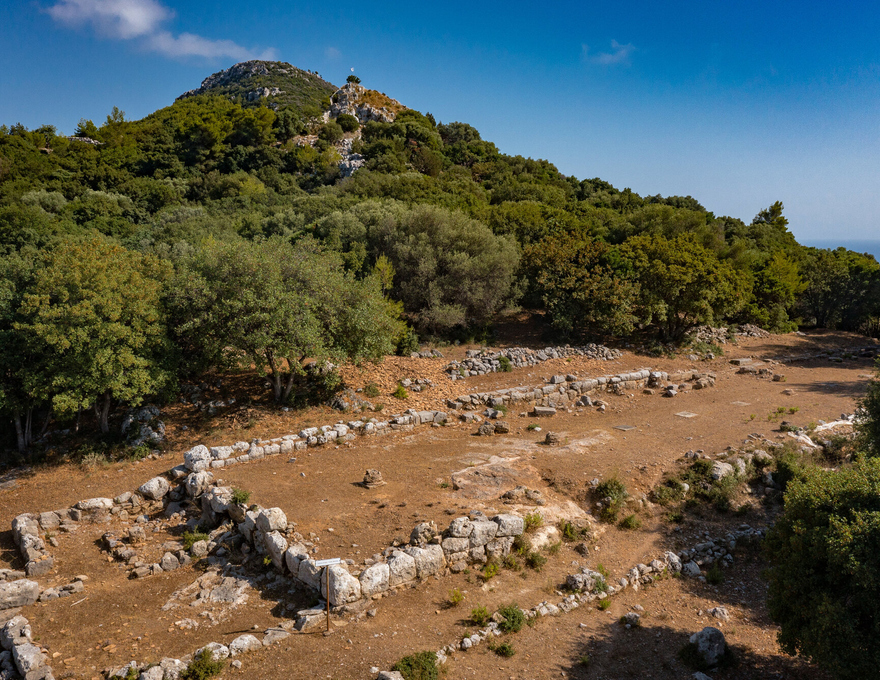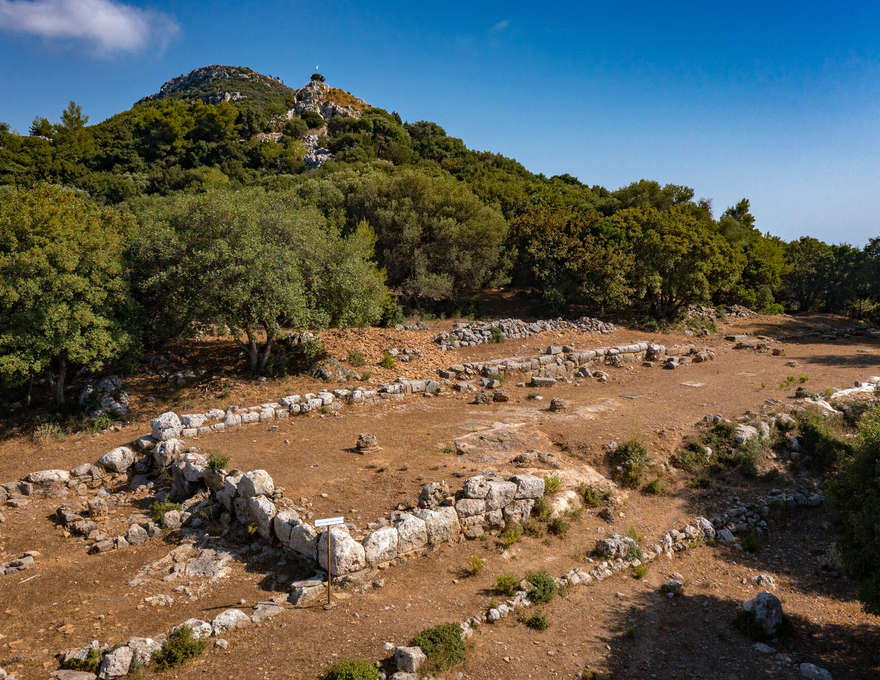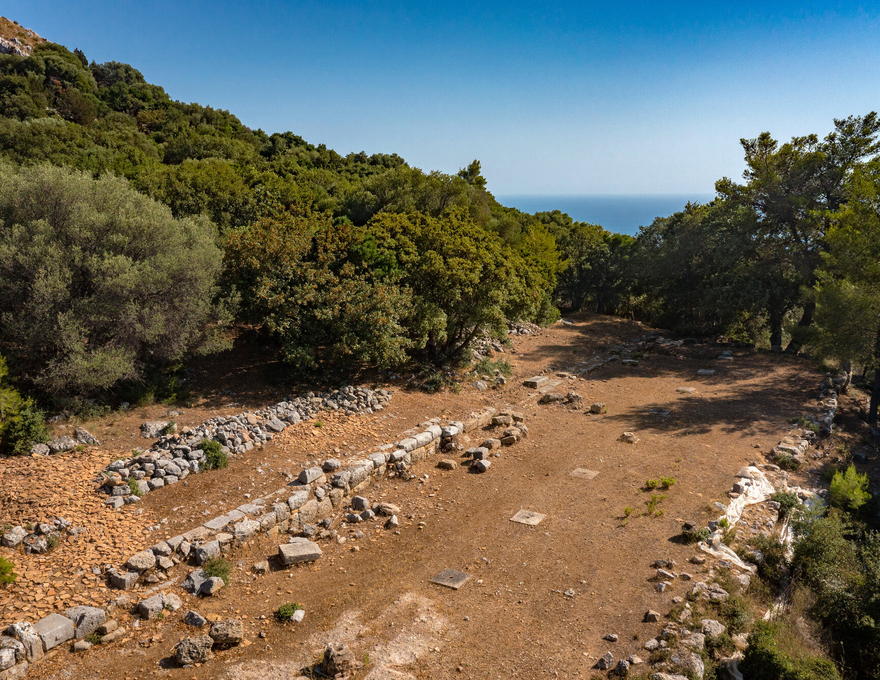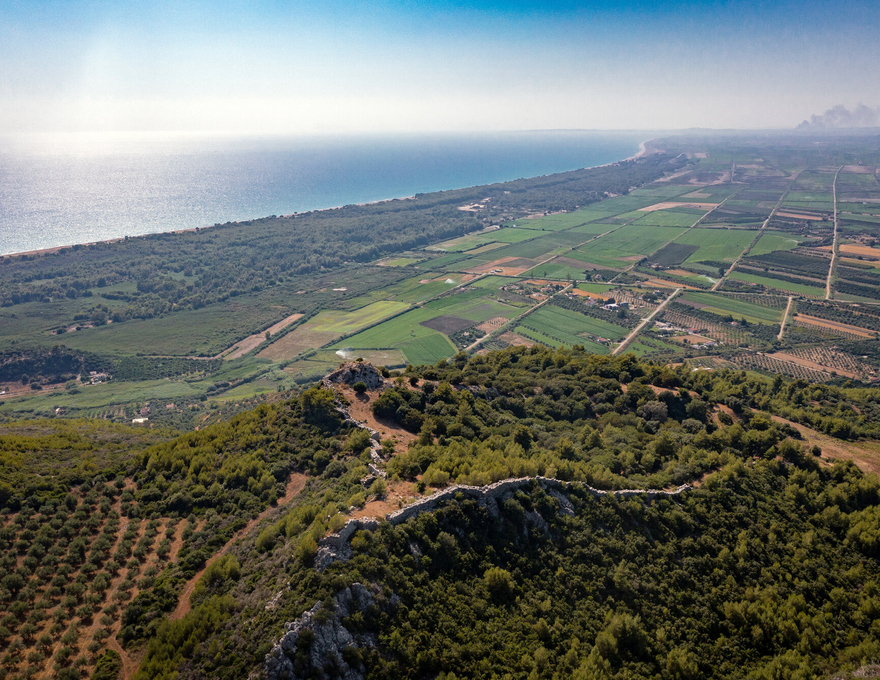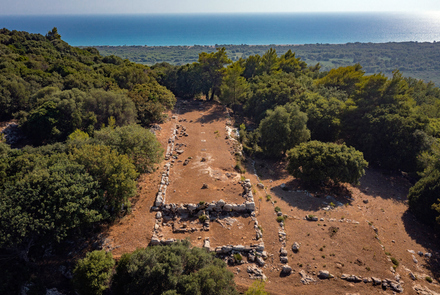Built in a naturally protected location on the western foothills of Mount Lapitha, the ancient fortification of Samikos is surprising due to the meticulous construction of its strong walls and their good preservation at a height of 5 – 12 buildings in its largest part. The excellently chosen position allows excellent supervision of a large part of the western coastline of the Peloponnese and the Ionian Sea and controls the very important passage of ancient Triphylia that ensured communication between Ilia and Messinia.
The walls are built according to the pseudo-polygonal system, with square towers, gates and posterns. The walls of the fortification probably date back to the 4th century. e.g. or the Hellenistic era. Within the fortifications, foundations of buildings and retaining walls are preserved which were necessary for the creation and utilization of flat surfaces as the ground is strongly inclined. Excavations in the past have brought to light a public stoic building, tanks and room complexes.
The fortified acropolis of Samikos of classical times which probably belonged to a city named Makistos, Samia or Samikon or Samos should not be confused with the prehistoric acropolis of the rocky outcrop at Kleidi possition, possibly identified with the Homeric Areni and later Makisto . This is the lowest elevation straight visible on the west of the current Pyrgos - Kyparissias road.
At Kleidi location, pottery sherds from the Middle Helladic-Late Helladic period, remains of a Mycenaean building that are not preserved today, have been found. A mound with multiple burials has also been excavated, yielding important findings from the late Middle Helladic to the late Mycenaean period, as well as an extensive cemetery of the late Middle Helladic period with box-shaped tombs and a vault covered by mounds.
- efahle@culture.gr
- 26240 22742 - 2624023753 (Εφορεία Αρχαιοτήτων Ηλείας)
- Αστυνομική Διεύθυνση Ηλείας-Α.Τ. Κρεστένων - Εφορεία Αρχαιοτήτων Ηλείας

